|
|
Safety
Test of The Relief Vent
|
|
(Controlled By Pressure) |
|
|
|
 |
| |
|
|
Cells: 3.2 V 20 Ah & 3.2 V 60 Ah |
|
|
Purpose: Test the effectiveness of GMET relief vent. |
|
|
Design of Relief vent: Vent would open to discharge
pressure when the
Pressure of
vapor of electrolyte inside of cell is
in between
0.25~0.6 mPa (87
psi or 6.11 Kg f/cm²) |
|
|
Input : 5V 300 Amp power |
|
|
Ambient temperature of the testing location: 32 ℃ |
|
|
6 points on the surface of cell are monitored. |
|
|
The temperature distribution shows the record of 6 points of
the temperature and time on cell. |
|
| |
|
|
Temperature Distribution during Safety Test |
|
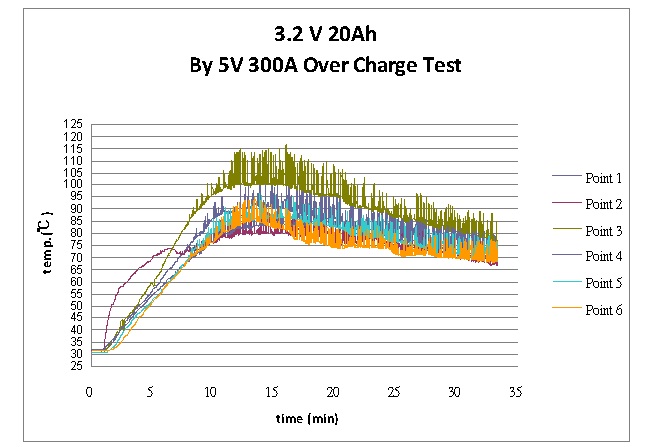 |
|
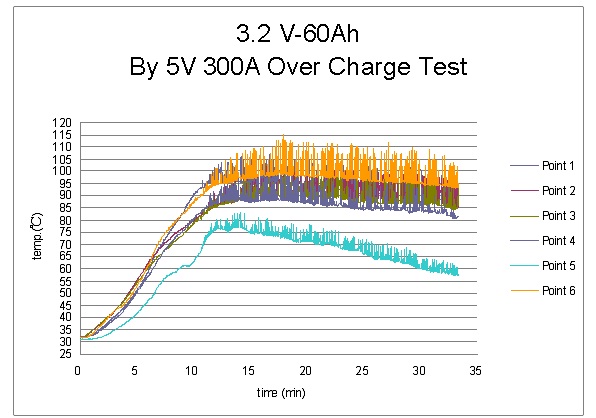 |
| |
|
|
When a short circuit or over charge occurred in the cell,
the air pressure inside the cell would rise higher and
higher till it breaks the shell or explosion. With a GMET
design controlled by pressure relief vent, the vent on
battery cell would open when the air pressure inside the
cell higher than 0.2~0.6 mPa (87
psi or 6.11 Kg f/cm²).
From the ideal
gas law
PV=nRT, to monitor the temperature is a proper parameter to
evaluate the effectiveness of pressure controlled relief
vent.
The 6 points of temperature on the surface of cell were
monitored, the temperature of battery cell can’t higher than
105 ℃ after the relief vent discharged at the controlled
pressure range.
The temperature inside of cell might higher than what the 6
points measured. However the 105 ℃ peak and down turn of the
temperature curve shows the temperature inside cells won’t
get higher. It proved the relief vent working and the cell
won’t get flame or burning and no risk of explosion.
If something occurred on the battery cells, the temperature
of GMET cell through designed relief vent working would
still less than 105 ℃. Since the temperature of cells won’t
higher than 140 ℃, there is no chance for GMET cells to
reach thermal runaway temperature. It is the safety of the
GMET cell. |
|
| |
|
| |
|
|
Test of The Advanced Design Relief Vent |
|
(Controlled By Temperature) |
|
|
|
|
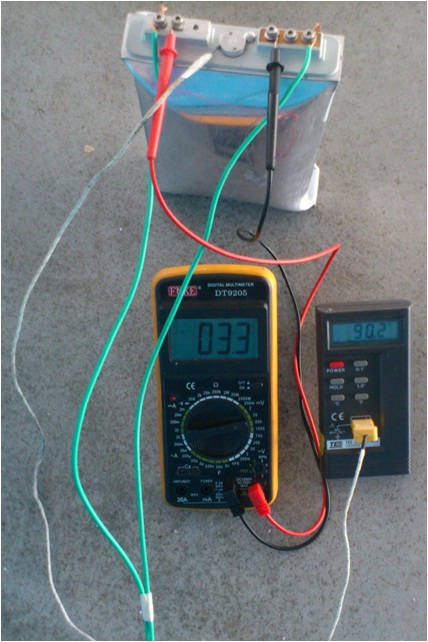 |
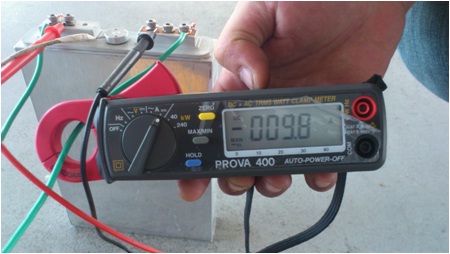 |
|
|
|
Cells: 3.2 V 20 Ah & 3.2 V 60 Ah |
|
|
Purpose: Test the effectiveness of the advanced design GMET
relief vent. |
|
|
Design of Relief vent: Vent would open to release pressure
when the
temperature of
vapor of electrolyte is higher than 95 ℃. |
|
|
Input : 5V 300 Amp power |
|
|
Ambient temperature of the testing location: 32 ℃ |
|
|
6 points on the surface of cell are monitored. |
|
|
The temperature distribution shows the record of 6 points of
the temperature and time on cell. |
|
|
|
|
Temperature Distribution During Safety Test |
|
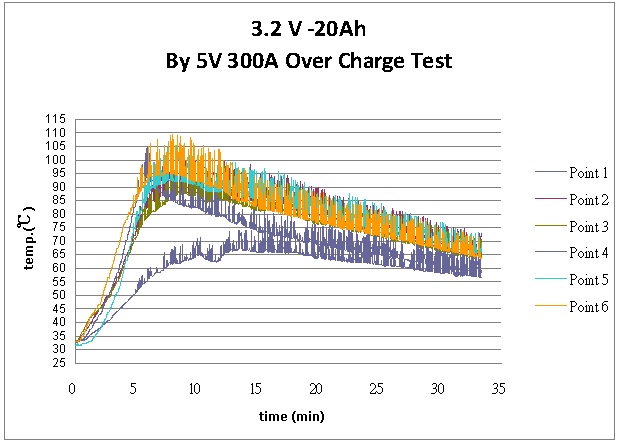 |
|
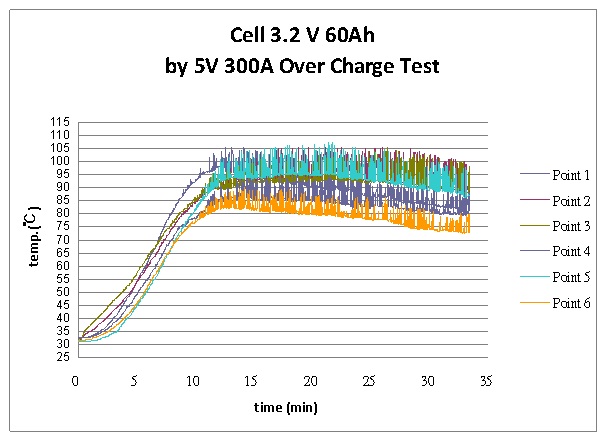 |
|
|
|
Observation of the Temperature Distribution |
|
When a short circuit or over charge occurred in the cell,
the temperature of cell is getting higher and higher till it
breaks the shell or explosion. With a GMET advanced design
relief vent, from the 6 points temperature curve monitored,
the temperature of battery cell after relief vent worked
can’t higher than 100 ℃ and it also shows the temperature
curve down turn. The temperature inside of cell might higher
than what the 6 points measured. However it proved the vent
working and the cell won’t get flame or burning and no risk
of explosion.
If abnormal situation occurred on the cells, the temperature
of GMET cells through the working of relief vent would still
less than 100 ℃. Since the temperature of cells won’t higher
than 140 ℃, there is no chance for GMET cells to reach
thermal runaway temperature. This is the safety of the GMET
cells. |
|
|
|
|
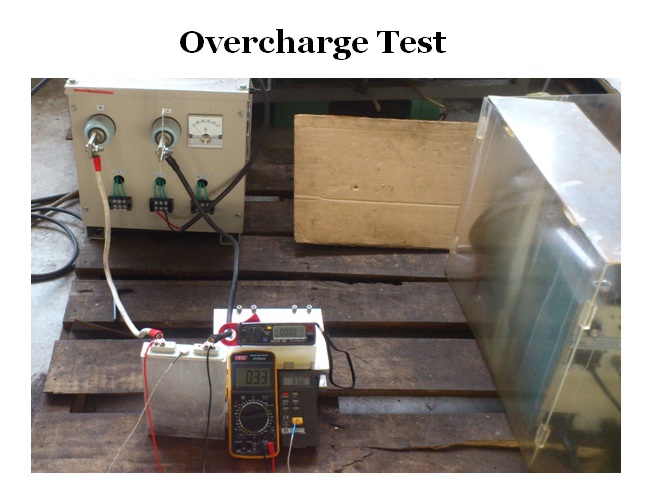 |
|
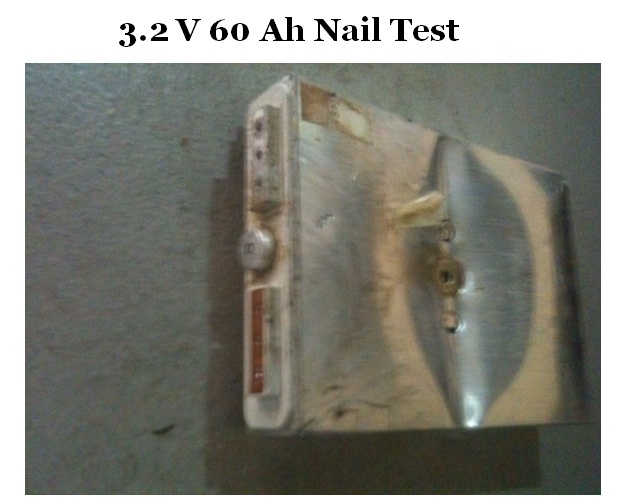 |
|
|

